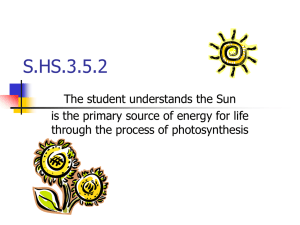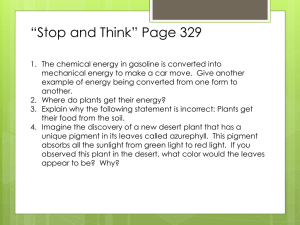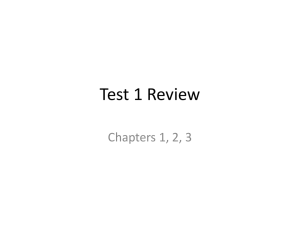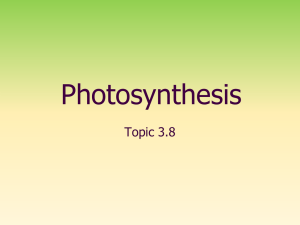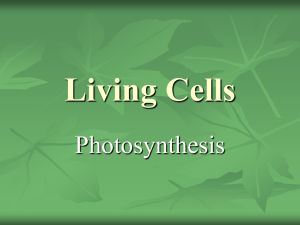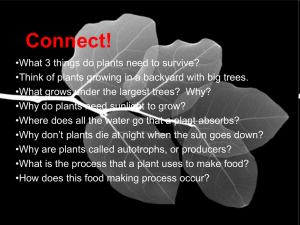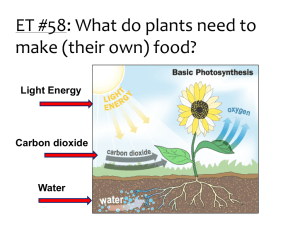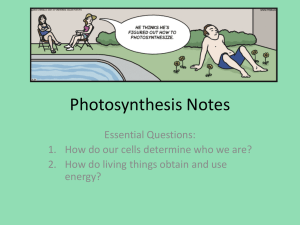Sept 27 Parent Meeting Science
advertisement
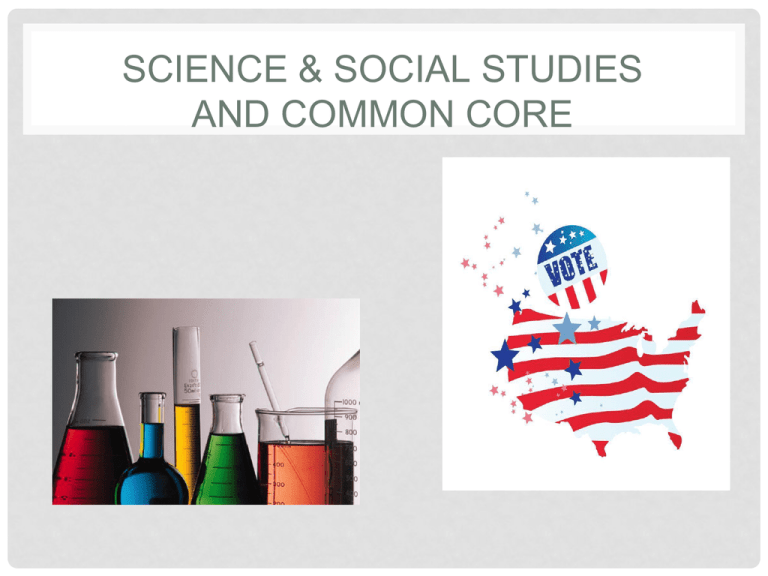
SCIENCE & SOCIAL STUDIES AND COMMON CORE TODAY’S OBJECTIVES • Introduce parents to the new Literacy standards and help them understand what to look for and how to help their children at home. • Inform parents about what AUSD is doing to transition to the Common Core State Standards (CCSS) with Science and Social Studies. 4 C’S + T OF 21ST CENTURY LEARNING & INNOVATION SKILLS • Creativity • Critical Thinking • Communication • Collaboration • Technology Literacy A Closer Look: Science/Social Studies Literacy Shifts • • • • • Knowledge in the Disciplines Staircase of Complexity Text-based Answers Writing from Sources Academic Vocabulary Literacy in SCIENCE Shift #1: Knowledge in the Discipline What is photosynthesis? Photosynthesis is a food-making process that occurs in green plants. It is the chief function of leaves. The word photosynthesis means putting together with light. Green plants use energy from light to combine carbon dioxide and water to make sugar and other chemical compounds. How is the light used in photosynthesis? The light used in photosynthesis is absorbed by a green pigment called chlorophyll. Each food-making cell in a plant leaf contains chlorophyll in small bodies called chloroplasts. In chloroplast, light energy causes water drawn form the soil to split into hydrogen and oxygen. What are the steps of photosynthesis process? Let me tell you the process of photosynthesis, in a series of complicated steps, the hydrogen combines with carbon dioxide from the air, forming a simple sugar. Oxygen from the water molecules is given off in the process…….. SHIFT #2: STAIRCASE OF COMPLEXITY uses light Plant uses light Make food PHOTOSYNTHESIS SHIFT #3: TEXT-BASED ANSWERS What Students need to do with the text: • Understand vocabulary in science • Read closely • Understand the concepts introduced: photosynthesis and why photosynthesis happens SHIFT #4: WRITING FROM SOURCES • What will students do: • Students will write a paragraph that explains photosynthesis and describes each step. They may also explain why plants need photosynthesis to survive. • How will they do it: • They will use their textbook, articles and the internet to write this paragraph. SHIFT #5: ACADEMIC VOCABULARY • Students will read from different texts and develop knowledge of academic content specific vocabulary. • Science vocabulary: • Photosynthesis, carbon dioxide, pigment, chlorophyll, oxygen Common Core Social Studies Listen to a friend. NEW ASSESSMENTS • Developed by Smarter Balanced Assessment Consortium (SBAC) • Grade 11 in ELA aligned to CCSS • The ELA SBAC will have science and social science topics for students to read and respond in writing Performance Task Example: Students will read a student lab write-up and write the conclusion for the lab. SMARTER BALANCED ASSESSMENT CONSORTIUM (SBAC) ITEM TYPES • selected-response items (SR) • constructed-response item (CR) • extended-response item (ER) • technology-enhanced item (TE) • performance task (PT) Go to www.ausd.us and click on Sample SBAC Pilot Test to take a practice test. WHAT CAN PARENTS DO TO HELP STUDENTS SUCCEED? • Stay involved, informed and engaged. • There are many ways to help: • • • • • Read with your children. Review and discuss their homework. Communicate with their teachers. Attend meetings to learn more. Learn about the standards and how they affect your child’s education and school. • Look through your child’s backpack each afternoon. HOW CAN YOU HELP YOUR CHILD IN LITERACY? • Ask your child specific questions about what they read. • Encourage children to read, then write and speak about nonfiction text such as their biology text, history text and articles. • Encourage children to research topics of interest and read series that relate to a central topic. • Have your child follow step by step instructions or a set of directions in order to accomplish a task, such as installing new software or operating a game. ONLINE RESOURCES • http://www.corestandards.org • http://www.commoncoreworks.org • http://www.pta.org


